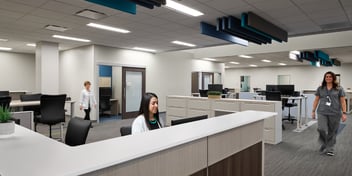Not too long ago the fact that some patients would contract a healthcare-associated infection (HAI) seemed inescapable. But over the past few years, there has been a very heavy and justified emphasis on hygiene management in hospitals. And while we've been quite successful in reducing these HAI's, previous hygiene concepts have ignored one rather obvious aspect of hospital hygiene: the architecture of the actual facility itself. As architects, we can help by creating designs that enable the practice of proper protocols instead of inhibiting them. Healthcare designers must become students of infection control best practices and use our knowledge of space utilization to encourage exceptional infection prevention techniques.




